Prop shops are on the rise.
With the financial crisis receding into history and new regulations targeting banks, the industry is witnessing a rebound in the number of new proprietary trading firms. And this could just be the beginning.
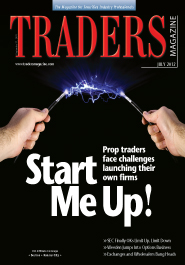
Refugees from big banks stung by the Volcker rule, as well as traders formerly with large hedge funds, are stepping out on their own. For many, however, it is not an easy task. According to data from hedge fund tracker HFR, the number of new funds has been streadily rising in the U.S. since the crash of 2008. Last year, a healthy 1,113 new funds were launched, compared to a 10-year low of 659 in 2008.
While new hedge funds continue to launch, the number of liquidations is stubbornly high, with 775 funds calling it quits last year. More and more traders are trying to set up their own shops, but it’s clearly far from easy for them to succeed.
Kevin Beadles, director of the execution solutions group at Wedbush’s Lime Brokerage, frequently deals with new firms. He said that over the past year, the number of startups launched by former prop traders has definitely picked up. There are all sorts of reasons prop traders strike out on their own, but at least 75 to 80 percent of the current shift is due to the Volcker rule, he said.
The Volcker rule, named for former Federal Reserve Chairman Paul Volcker who backed the concept, forbids banks from engaging in proprietary trading, though certain market-making activities are still allowed. The rule is required by the Dodd-Frank Act, and the Securities and Exchange Commission is weighing how to formulate its specific wording.
In spite of the fact the rule hasn’t even been written yet, banks have been losing traders from their prop desks in anticipation. Last year, Bennett Grau and Mark Mallon left Goldman Sachs to start a new global macro hedge fund together with fellow Goldman alum Marc Mezvinsky. Another Goldman prop trader, Daniele Benatoff, jumped ship to launch the London-based hedge fund Benros Capital.
Goldman is far from alone. Peter Muller, who founded a Morgan Stanley prop group, left the nest last year, and is expected to launch a new hedge fund seeded by Morgan. Todd Edgar, who got poached by Barclays from JPMorgan in 2009, left last year as well—again, to start his own hedge fund. Add to that list Kay Haigh, who left Deutsche Bank to launch Avantium Investment Management.
Of course, those are all highly respected traders able to attract large amounts of capital. Most prop traders are in for a whole new world when they attempt to get their new ventures off the ground. Suddenly, they find themselves without the support structure of a large bank, and often they are unprepared for the number of things they will have to do themselves, from selecting technology to raising capital to complying with regulations.
Adam Guren, a former prop trader who in February launched the hedge fund firm Hunting Hill Capital, considered leaving the prop desk back in 2009. But after taking a look at what that would entail, he decided to wait a couple years.
“I quickly realized that I knew how to generate alpha, but I had no idea how to launch a hedge fund,” Guren said.

He spent two years back at school, studying entrepreneurial management, and at the same time continued to run a portfolio for the proprietary trading firm First New York Securities.
But even his graduate studies didn’t prepare him for everything he would need to run a business, so Guren built a team to take care of operations, including an experienced chief financial officer.
“It’s just like any other business—when you start it off the ground, you’re never going to get everything perfect,” Guren said. “If I didn’t have him [my CFO] or a guy like him, it would be very difficult.”
Most experts agree building a top-notch support team is vital for any startup fund that wants to stay around. But that’s only the first of many challenges faced by the new generation of trading firms launched by prop traders.
Tech Challenges
Once a firm has its people in place, it has to select what technology to use. That can be hard for prop traders who are used to having the best of everything without having to worry about costs. Lime’s Beadles said that when prop traders see the price tag on top-of-the-line infrastructure, they can get sticker shock.
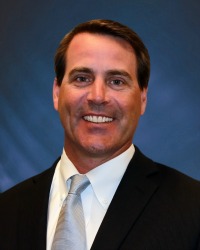
“Most traders at a bulge bracket firm, they’re not concerned with cost,” Beadles said. “The firm pays for it. They have the infrastructure. They have the support. They have the resources. All of a sudden, managing your own capital, now you have to go out and cost the infrastructure and build out yourself.”
Most experts agree that about 5 to 15 percent of a trading firm’s infrastructure needs to be proprietary, depending on the strategy. While these systems have to be built from scratch, if firms try to do everything else themselves, too, they will never get up and running.
Firms can spend nine months to more than a year building their own systems, at which point the market could have changed. If that happens, they might have to start over and rebuild their models without ever putting up a single trade.
Jarrod Yuster, chief executive officer of Pico Quantitative Trading, understands why firms want to do things themselves, but startups need to be practical.
“Some of these guys want to build everything from scratch,” Yuster said. “They want to build a FIX engine, they want to build feed handlers—things that may not necessarily be proprietary or add value.”
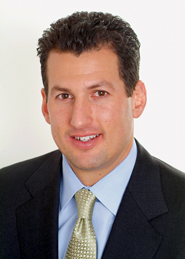
The trick is to figure out what it makes sense to build in-house and what is better off bought from a vendor. That isn’t easy, since each shop has its own strategy, and what one firm has to build itself might be of little proprietary value to another.
Agency-only broker Pico has made a niche for itself helping new firms. It consults with traders running startups to help them strike the right balance with their technology. Pico advises them not only on whether to build or buy, but also on which vendors might be right for them.
“For some clients, they want the best,” Yuster said. “They want the fastest. They want the most scalable. For other clients, they want something good, but at a very reasonable cost.”
Vernon Barback, president and chief operating officer of the hedge fund administrator GlobeOp Financial, knows what it’s like for a prop trader to start a business from scratch. Earlier in his career, he worked on the prop desk at Bankers Trust. He left to build a hedge fund management company within Bankers Trust, but discovered he was starting everything at square one.
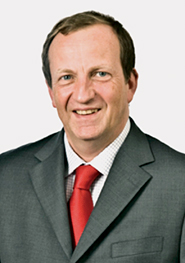
His biggest challenge was trying to understand the extra operational and technology support layers he needed to be a good fiduciary for external investors. Those were things he had always taken for granted as a prop trader.
And today, investors are more concerned than ever with performing their due diligence. After the Madoff scandal and the financial crisis, investors want to make sure a firm has a robust infrastructure with appropriate checks and balances in place.
“The amount of work that you have to do, the amount of transparency that you have to offer, continues to move up,” Barback said.
That means the amount in assets a firm needs just to cover startup costs has risen, as well. It used to be a new firm needed $50 million to $100 million in assets to cover expenses, but now Barback says some startups might need as much as $200 million, unless founders are willing to sacrifice getting paid for a few years.
Unfortunately, the current climate has made fund raising more difficult than in the past. The majority of recent hedge fund launches have been in the $100 million range, according to sources.
Sal Naro is a former prop trader who started the hedge fund Sailfish Capital Partners in 2005. That fund shut down during the financial crisis of 2008, and Naro has now launched a new hedge fund, Coherence Capital Partners.
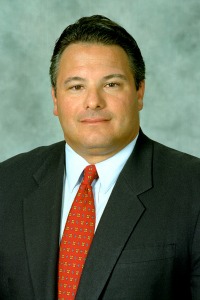
According to Naro, it’s definitely more difficult to raise capital today. Investors are doing additional due diligence, and, he said, in the wake of the Madoff scandal, the increased scrutiny is necessary.
“The industry has been tarnished,” Naro said. “We need to have some more levels of regulation and some more scrutiny.”
Jack Wiener, executive vice president at software vendor Linedata, said his firm has seen quite a few recent startups with less than $100 million in assets. That sentiment was echoed by a number of other professionals who all reported new shops are finding it hard to reel in money.
According to Wiener, the solution might be to improve institutional infrastructure so a firm looks as professional as possible. He said the days are over when investors just looked for a hot new trader with a good track record.

“Folks want to know that you’ve got a real business running,” Wiener said. “The goal here is to show your investors that you know what you’re doing and you’re investing in technology.”
Funds are accountable to all of their investors, not just to the head of the prop desk. To attract capital, and to keep it, new funds have to convince investors with more than just performance numbers.
If they want to borrow extra capital, that can be a problem, too. Prop desks can get leverage a lot cheaper from their banks than a hedge fund can get it from a prime broker. Not to mention, prime brokers are less willing to lend big in general.
Reduced Liquidity
Tight money is worrisome to everyone in the industry. Even if former prop traders perform the same types of market-making activities in their newly launched firms as they did back at banks, they won’t have the same capital available to do so. And that will hurt liquidity.
David Beth, a former prop trader who co-founded the intermarket broker WallachBeth, said he has noticed a reduction in liquidity caused by banks spinning off their prop desks. Former prop folks he trades with are still making markets when they start their new firms, but they have far less money to execute their strategies, he said.
“These are the guys who used to be, basically, two-sided market makers,” said Beth. “There’s been a reduction in liquidity directly related to the Volcker rule and the impact of bank prop trading desks being dismantled.”
Lack of capital isn’t the only reason for reduced liquidity. Some in the industry have noted that former prop traders are less aggressive when trading with their own firms than they were when they were back at a big bank. That doesn’t seem to be true for all strategies, but certain high-stakes bets might be easier to make with a bank’s money than with the savings of investors a trader has actually met.
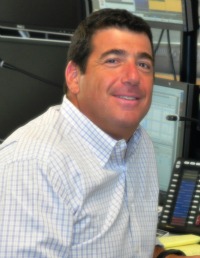
Sean Klinkowize, global head of hedge fund marketing at TradingScreen, said that for whatever reason, some traders pull back a bit when they are working at their own shops.
“A long-short global prop desk or a macro prop desk has access to a huge array of resources—capital, infrastructure, support staff and proprietary tools,” Klinkowize said. “When these entities go out on their own, some find that they have a challenge replicating their original trading style without all these resources at their disposal, and they have to scale back their investment and trading profile.”
Klinkowize sees a paradigm shift of where liquidity is coming from in the marketplace. More and more, it’s the institutional buyside that is becoming the liquidity provider, he said. The way in which the industry does business is changing. With prop shops doing a disappearing act, everyone else has to adjust.
That includes the hedge fund world. A large number of the new fund launches are multi-regional and multi-asset class, which probably reflects the expansive nature of most prop desks.
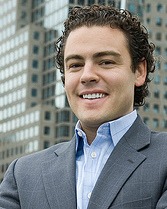
More expansive strategies also seem to play well with investors. With capital scarce, funds have to offer strategies that investors can’t find elsewhere, so the more esoteric strategies used by prop desks can be attractive.
Ryan Terpstra, the founder and chief executive officer of the event data provider Selerity, said he has seen new funds sprouting up more and more as the exodus from prop desks continues, but those able to raise money and succeed are the ones that are able to offer something a little different from competitors.
“It’s having a strategy that’s differentiated, and having a good story to tell investors,” Terpstra said. “We meet a lot of firms that are right in the middle of fund raising, and they say, ‘Look, we’d love to have event-driven trading as part of our pitch to investors, because it’s differentiated—it’s new.’”
Registration
It used to be that prop traders who started their own partnerships or hedge funds didn’t have to worry too much about regulation, but times have changed. The Dodd-Frank Act includes a provision to get hedge funds to register with the SEC. Not all new shops have to register, but all will at least need to look into what is expected of them by the government.

0)]
Lance Zinman, chair of the Chicago financial services group at law firm Katten Muchin Rosenman LLP, said even though the change in the law was aimed at hedge fund managers, the law could be read to cover a small proprietary trading firm if it has even a single passive investor.
“There were many firms that recently registered as investment advisers that were not required to register under the prior regime,” Zinman said. “There are equity proprietary trading firms that had in the past one passive investor or two, or a seed investor, and now they are surprised to learn that, ‘Wow, I might be a fund.’”
The legal question is whether there is an advisory relationship with the prop trading firm. For some firms, there might be, though typically not. However, he said if a firm has any passive investors, even one, it should consult counsel.
Brian Sentance, CEO of the data and analytics firm Xenomorph, deals with a lot of former prop traders. He said many of them don’t have to worry about registration starting out, because they won’t reach the minimum asset threshold right away. After a year or two, however, they might have to look at getting registered.

1)]
Sentance said Dodd-Frank is causing not just hedge funds, but also family offices and even private equity firms, to do more risk reporting and provide new data to regulators. The government claims it needs this information to keep tabs on systemic risks, but once regulators have the data, investors will start asking for it.
“It’s a requirement to the regulators, but the clients know that regulation is taking place,” Sentance said.
In spite of the challenges, prop traders are likely to continue to make their own way in the world. The simple truth is that they will have to. Stephen Ehrlich, CEO of Lightspeed Financial, which provides a number of prop trading groups with direct market access, points out that Volcker is still being formulated. Once the rule is enacted, even more traders will be forced to leave the banks.
“We’re seeing a fairly steady influx of clients that are starting their own firms, but think that there could be an even greater outflow from the banks once the rules have been finalized,” said Ehrlich.
Given the recent light volumes, many prop traders are waiting for conditions to improve, or for regulators to force them to leave. Eventually, though, Volcker will require banks to cease proprietary trading. When that happens, the current wave of startups could end up looking like just a ripple in the pond compared with what is to come.



